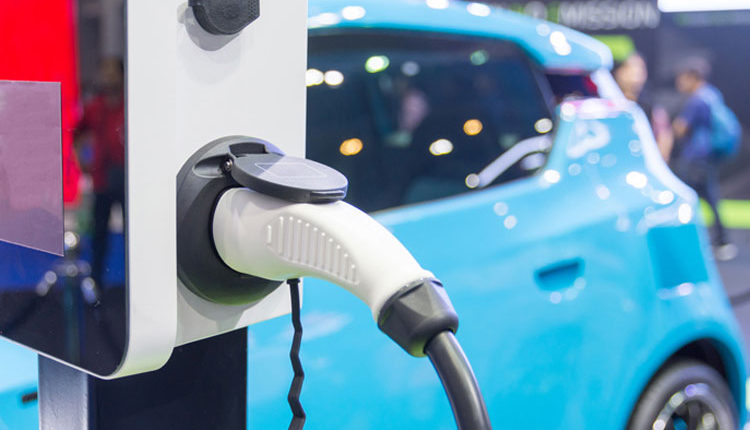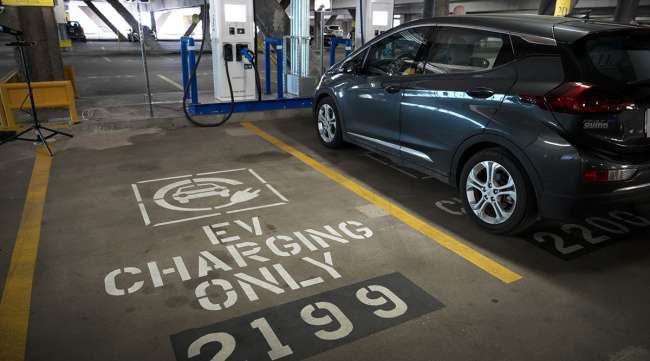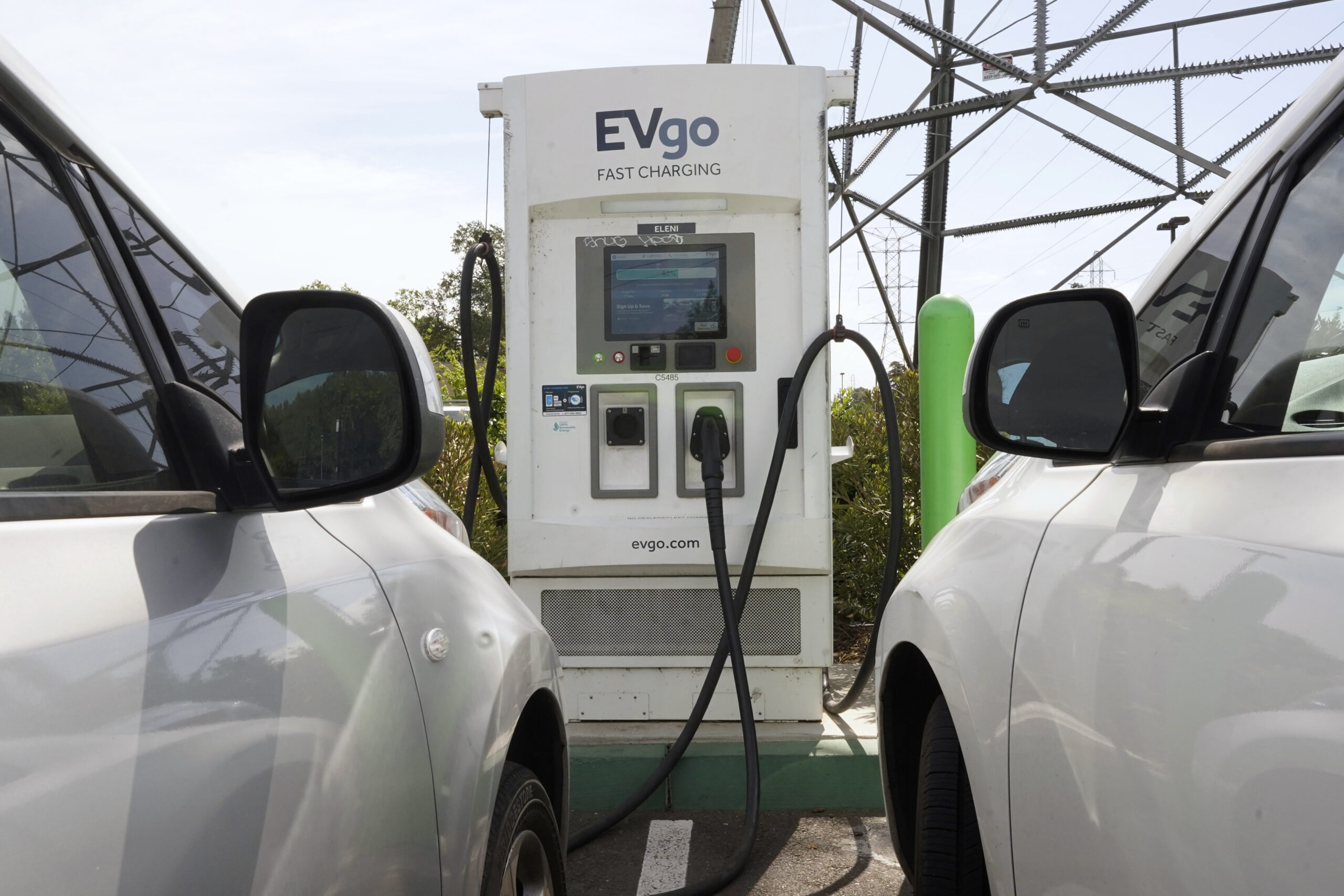Leading EV Charging News: Key Updates on Facilities and Innovation

Recent Advancements in Fast-Charging Technology

Furthermore, innovations in battery technology, consisting of boosted thermal management systems and greater power density batteries, complement fast-charging capacities. These developments alleviate the threat of battery degradation during quick charging, ensuring durability and efficiency for EV proprietors.
Additionally, the combination of wise billing solutions is enhancing individual experience, making it possible for real-time monitoring and dynamic prices designs. EV Charging news. This adaptability allows chauffeurs to enhance billing prices and times based on grid demand
As automakers remain to invest in fast-charging networks, the partnership in between sector stakeholders is crucial. Partnerships between charging station companies and vehicle suppliers are leading the means for extensive coverage, ultimately fostering a much more robust EV environment. These improvements are essential in sustaining the shift to sustainable transportation.
Government Initiatives for Charging Expansion
Federal government campaigns play an essential duty in the development of electrical automobile (EV) charging infrastructure, facilitating the transition to lasting transport. Different federal and state programs are being implemented to enhance billing availability, minimize the economic concern on customers, and advertise the fostering of electrical automobiles.
Notably, the U.S. federal government has actually designated considerable funding via the Facilities Investment and Jobs Act, which sets aside $7.5 billion for EV billing network development throughout the country. This funding is intended at deploying thousands of brand-new charging terminals, especially in underserved areas, therefore attending to array anxiousness among potential EV purchasers.
Additionally, countless states are passing legislation to enhance the permitting procedure for charging terminal installations, which is crucial for increasing deployment. Motivations such as tax credit scores and discounts for both consumers and organizations are likewise being presented to encourage the setup of billing facilities.
In addition, public-private partnerships are significantly becoming a focus, leveraging exclusive investment to match federal government funding. These efforts emphasize a collaborative technique essential for developing a effective and thorough EV charging network, ultimately adding to a greener and even more lasting future.
Innovative Battery Solutions Enhancing Effectiveness
Changing the landscape of electrical vehicle (EV) innovation, ingenious battery remedies are significantly improving effectiveness and efficiency. Breakthroughs in battery chemistry, specifically with lithium-sulfur and solid-state batteries, are leading to enhanced energy density, which enables for longer varieties and faster billing times. These brand-new battery kinds have the possible to outperform conventional lithium-ion batteries by providing higher capabilities while minimizing weight, consequently boosting total lorry performance.
In addition, growths in battery monitoring systems (BMS) are maximizing power use and prolonging battery life expectancy. Intelligent algorithms keep track of battery health and performance, enabling real-time adjustments to billing and releasing procedures. This not just improves the efficiency of the battery however likewise makes sure a much more sustainable and reliable power resource for EVs.
Additionally, the integration of recycling modern technologies is resolving the environmental impact of battery manufacturing and disposal. Technologies in second-life applications for EV batteries are facilitating their use in power storage systems, adding to a circular economy.
As these cutting-edge battery options remain to evolve, they assure to change the EV market, making electric vehicles extra enticing and easily accessible to a broader target market while supporting international sustainability goals.

Partnership In Between Automakers and Billing Networks
Acknowledging the essential demand for a durable billing framework, car manufacturers are significantly teaming up with billing network providers to enhance the EV possession experience (EV Charging news). These collaborations intend to develop a smooth charging environment that benefits consumers and supports the change to electrical automobiles
Significant vehicle brands are joining pressures with well-known billing networks to broaden their charging station insurance coverage, making certain motorists have accessibility to practical and dependable billing choices. Collaborations with networks like ChargePoint and Electrify America enable automakers to incorporate charging remedies straight into their automobiles' navigation systems, leading individuals to the nearest terminals and providing real-time schedule updates.
Additionally, these collaborations commonly result in the growth of fast-charging innovations that dramatically minimize the moment needed to reenergize an EV. By pooling sources Our site and knowledge, car manufacturers and charging networks can introduce faster, producing remedies that satisfy the expanding demand for electrical mobility.
Additionally, joint campaigns may likewise lead to more standard billing protocols, which can relieve consumer confusion and advertise more comprehensive EV adoption. Generally, these strategic alliances are essential in constructing a efficient and easy to use charging facilities that fulfills the demands of an expanding electric automobile market.
Obstacles Facing EV Charging Framework
As the electrical vehicle market remains to grow, a number of obstacles are appearing that hinder the development of an extensive billing facilities. Among the key barriers is the not enough variety of billing terminals, particularly in rural and underserved urban areas. This gap creates range anxiety among potential EV buyers, discouraging them from making the switch.
Furthermore, the lack of standardization accountable technology complicates the infrastructure landscape. Variations in plug kinds and billing rates can develop complication for individuals and boost functional complexities for charging network operators. Furthermore, the assimilation of billing terminals anonymous into existing electrical grids poses substantial obstacles. Many areas encounter capability limitations, requiring significant investments in grid upgrades to accommodate raised need.
Another pushing problem is the high cost related to the setup and upkeep of charging terminals, which can be a barrier for both exclusive services and public entities. Regulatory difficulties and zoning limitations can postpone the release of billing framework, hampering progress in expanding important services. Attending to these difficulties will be essential for fostering a robust EV ecosystem that supports the change to sustainable transportation.
Final Thought
Finally, the continuous improvements in EV billing innovation, sustained by significant federal government campaigns and cutting-edge battery options, are vital for the expansion and performance of electric car facilities. Collaborations in between car manufacturers and charging service providers better enhance terminal protection, dealing with the growing demand for easily accessible charging choices. Regardless of challenges that linger within the EV charging landscape, these developments symbolize a favorable trajectory towards a much more sustainable and effective electrical automobile environment.
Developments in billing facilities have actually led to the advancement of ultra-fast battery chargers qualified of delivering up to 350 kW of power, substantially minimizing my company charging times. Variants in plug kinds and billing speeds can create confusion for users and increase operational intricacies for billing network operators.In final thought, the recurring advancements in EV charging innovation, supported by substantial government campaigns and ingenious battery options, are critical for the expansion and efficiency of electrical automobile facilities. Partnerships in between automakers and billing companies further enhance station coverage, addressing the expanding demand for obtainable billing alternatives. Despite challenges that persist within the EV charging landscape, these growths indicate a positive trajectory towards an extra lasting and efficient electrical car ecological community.
Comments on “What’s Driving the Growth of EV Infrastructure? Buy EV Charging news for Key Updates”